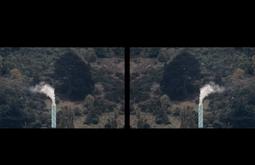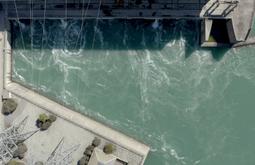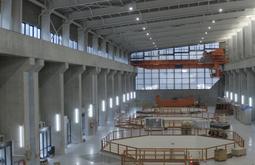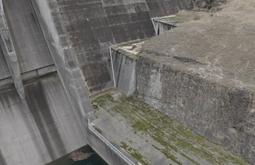Empty Vessels is a sculptural installation and film work that continues Matthew Galloway's investigations into Aotearoa’s reliance on phosphate rock from Western Sahara. Phosphate is mineral rock used to make fertiliser, partly fuelling Aotearoa’s high-performing agricultural industry. However, the resource is controlled by Morocco’s violent occupation of the region, which has displaced the Sahrawi people from their land.
In 2022, while living in Ōtepoti Dunedin, Galloway began recording the movement of ships carrying phosphate from the Western Sahara to the Otago Peninsula. These ships first dock in New Zealand shores at Ahuriri, Napier’s port, before moving south. Empty Vessels traces the movement of these ships, while also displaying 10 years of shipping data that seems to suggest that—in the face of growing public pressure over the ethics of this trade—New Zealand fertiliser company, Ravensdown, may be moving away from using phosphate from this region. The two-screen film is supported by a sculptural frame, which is painted in the green of the Ravensdown brand colour and gives a physical form to the less visible corporate structures that shepherd these ships across oceans.
For the work's exhibition at Te Whare Toi o Heretaunga Hastings Art Gallery in 2024, Empty Vessels was shown alongside Desert Narratives, an experimental documentary film by Mohamed Sleiman Labat, a visual artist and poet based in the Sahrawi Refugee Camps. Desert Narratives looks at the story of phosphate and growing food in the desert, weaving together multiple narratives about sand particles, plants, human and mineral displacement.
Sleiman Labat and Galloway first met in the Sahrawi Refugee Camps in 2016, and have had an ongoing correspondence in the years since.
— text adapted from Te Whare Toi o Heretaunga Hastings Art Gallery, 2024.



